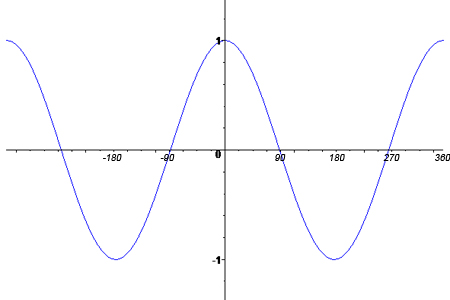Even and Odd Trig Functions
|
sin( -x ) = - sin x |
csc ( -x ) = - csc x |
|
cos ( -x ) = cos x |
sec (-x ) = sec x |
|
tan ( -x ) = - tan x |
tan ( -x ) = - cot x |
Example 1: find the value of (4 · sin (-60))2
= (-4 · sin (60))2 sin(-x) = - sin x
= 

= 
= 12
Example 2: Determine if the following function is odd or even
f(x) = x3 sin x
Find f(-x) f(-x) = -(-x)3sin (x) replacing x with -x and sin (-x) = - sin x
f(-x) = x3 sin x
f(x) = f(-x) therefore the function is even.
Example 3: Determine if the graph is odd or even.

The graph is symmetric with respect to the origin therefore it is on odd function.
Cosine Function

The graph is symmetric to the y- axis therefore it is an even function.
The majority of functions are neither odd nor even, however, sine and tangent are odd functions and cosine is an even function. This can be important information when identifying graphs.
|
Related Links: Math Trigonometry Power Reduction Formula Product to Sum and Sum to Product Formulas |
To link to this Even and Odd Trig Functions page, copy the following code to your site:
